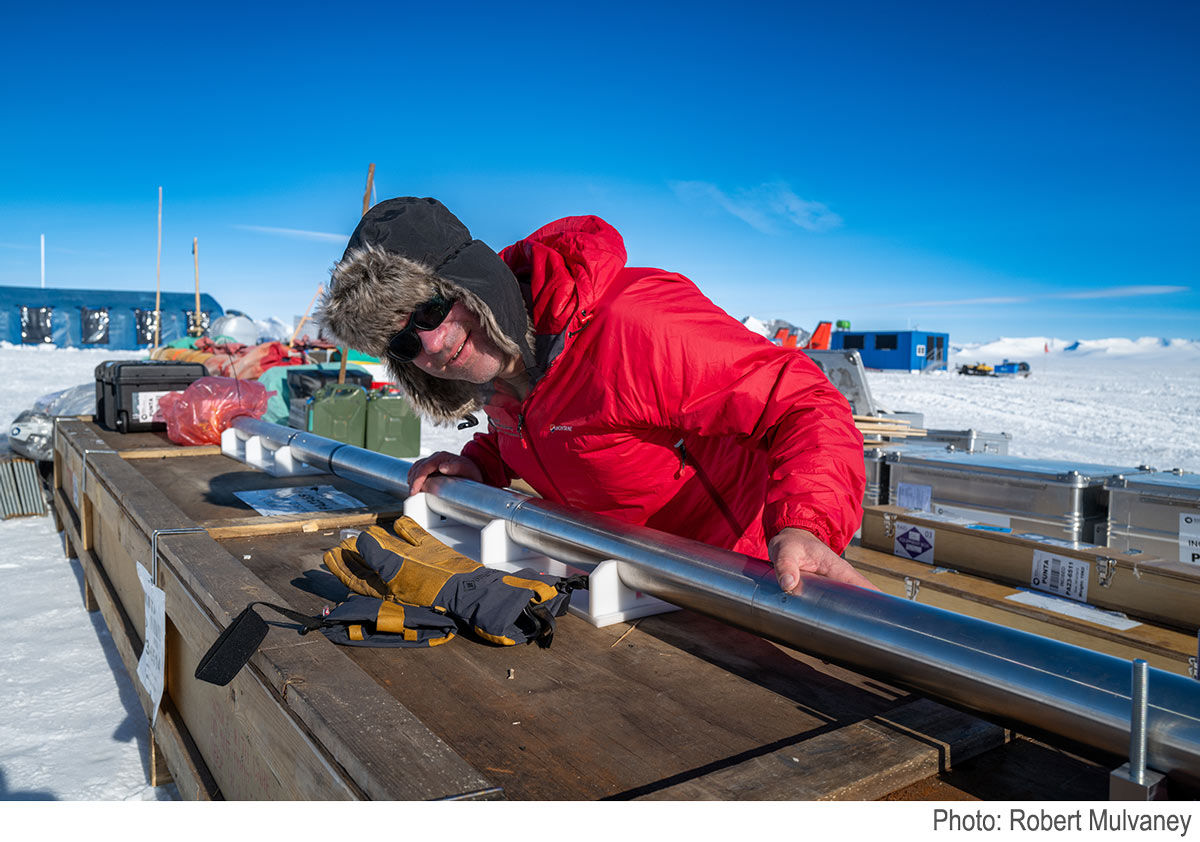Cutting through subglacial rock with P-RAID
Professor Patrick Harkness and Dr Kevin Worrall of the James Watt School of Engineering travelled to Antarctica to test their Percussive Rapid Access Isotope Drill (P-RAID), in expeditions funded by the STFC Impact Acceleration Account (IAA), in collaboration with the British Antarctic Survey. Successful tests demonstrate that P-RAID can cut through rock to collect samples to validate climate change models, and works in planetary analogue settings, in preparation for future space missions.
The opportunity
Deep subglacial bedrock samples will have great scientific value as they can be analysed to determine how long they have been under the ice. This, in turn, will allow the advance and retreat of the ice sheet to be reconstructed, providing validation for global climate models, and helping to inform decisions by the Intergovernmental Panel on Climate Change. However, obtaining these samples is extremely difficult and often logistically impossible. Despite these difficulties, subglacial rock samples are needed to provide data towards the ongoing development of climate models and the conversation around climate science at this critical time.
What was done to address the challenge?
A team from the University of Glasgow, led by Professor Harkness and Dr Worrall, conducted field tests of a rock-cutting percussive attachment to a British Antarctic Survey ice drill system called the Rapid Access Isotope Drill (RAID), which the team called Percussive-RAID (P-RAID). This enabled subglacial bedrock sampling from the bottom of RAID’s borehole, which originally could drill through ice sheets down to many hundreds of metres but could not obtain samples of the underlying bedrock.

What was the outcome?
STFC IAA funding allowed successful field trials to take place in January 2019, and helped support a successful €3.4m European Research Council grant application, INCISED, as well as a £355k European Space Agency grant, DEEPER. The technology was accelerated to Technology Readiness Level 5 (TRL 5), where the percussive attachment was demonstrated to work in the integrated RAID system, as a result of IAA funding. The intention is to further mature the technology through these funding mechanisms. The IAA has funded several projects related to P-RAID, and the latest expedition to the Antarctic in December 2023 enabled the team to acquire subglacial rock samples for analysis to understand the history of the Earth.


